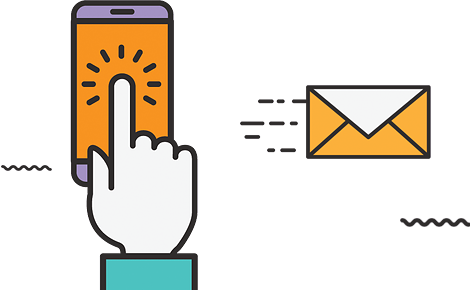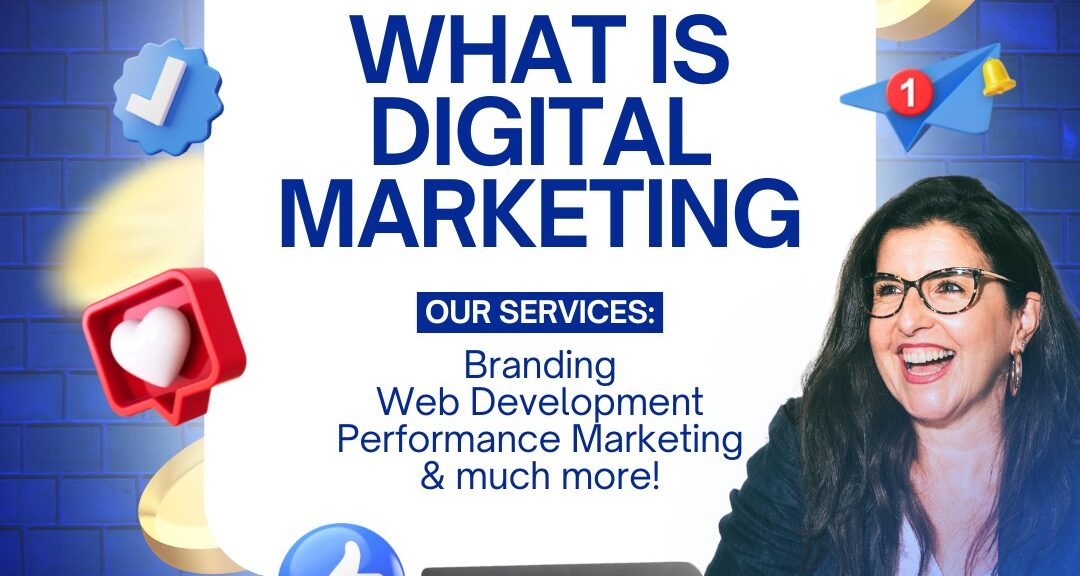
Digital marketing means online marketing strategies to get to consumers through computers, mobile devices, and tablets. Search engine marketing (SEM), social media marketing (SMM), pay-per-click (PPC), display advertisements, email, or video forms are examples of the most followed portal in promoting online marketing. These are indeed essential for growing a business amidst the times that we live in.
To put it simply, digital marketing reaches beyond traditional marketing avenues, such as magazines and billboards or even direct mail because it is able to explore multiple realms on the international arena and to bring the target clientele into real-time reality with the ad. The TV commercials might have to be put to standard for demarcation against which traditional marketing would be side-saddled, but with the surge of the so-called connected television advertising that will blur those aforementioned distinctions even more.
Digital marketing means online marketing strategies to get to consumers through computers, mobile devices, and tablets. Search engine marketing (SEM), social media marketing (SMM), pay-per-click (PPC), display advertisements, email, or video forms are examples of the most followed portal in promoting online marketing. These are indeed essential for growing a business amidst the times that we live in.
To put it simply, digital marketing reaches beyond traditional marketing avenues, such as magazines and billboards or even direct mail because it is able to explore multiple realms on the international arena and to bring the target clientele into real-time reality with the ad. The TV commercials might have to be put to standard for demarcation against which traditional marketing would be side-saddled, but with the surge of the so-called connected television advertising that will blur those aforementioned distinctions even more.
What is digital marketing?
Digital marketing or online marketing is the practice of branding and making customers aware using the internet as well as other forms of digital communication. Not only email and social media, web-based advertisements also include text and multimedia messages as a marketing channel.

The Power of a Digital Marketing Strategy
In brief, a digital marketing strategy collects all online channels, from SEO to PPC and content marketing to social media, email marketing, in order to attract potential customers, engage them, and delight and convert them. With such strategies, businesses will be more maximized, increased ROI beyond expectations, and improved brand visibility.
According to a Forrester Consulting research, 88% their marketers believe that increasing usage of AI and automation would lead to meeting customer expectations and being competitive.Such integrations direct businesses in driving better engagement through increased personalization in campaigns.
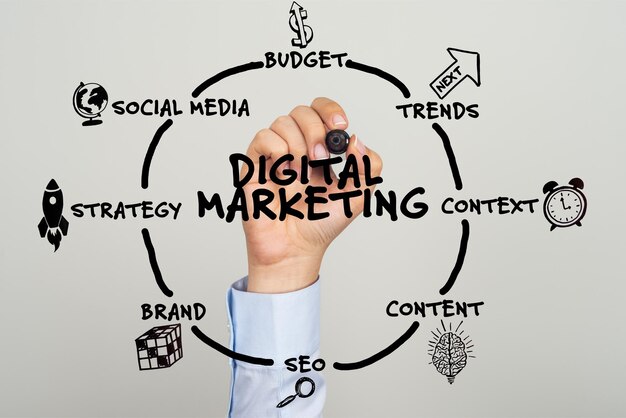
Key Takeaways
- Promoting any products or services through these channels- web/website, mobile devices and social media-that seems to be digital marketing.
- Digital marketers have a number of tools to gauge the effectiveness with which digital marketing campaigns have been run.
- The biggest challenge that a digital marketer faces is to position itself in a world crowded with such digitized advertisements and many distractions.
Essentially, if a marketing campaign involves digital communication, it’s digital marketing.
Types of Digital Marketing Channels
Digital marketing channels have evolved since the 1990s and still continue to do so today. Here are eight of the most popular channels in use today.
Website Marketing
Websites usually act as the central platform of digital marketing for an organization. The best websites usually portray the brand and its associated products and services in an easily understandable and memorable way. In the present age, a website must load quickly and be compatible with all mobile devices and user-friendly.
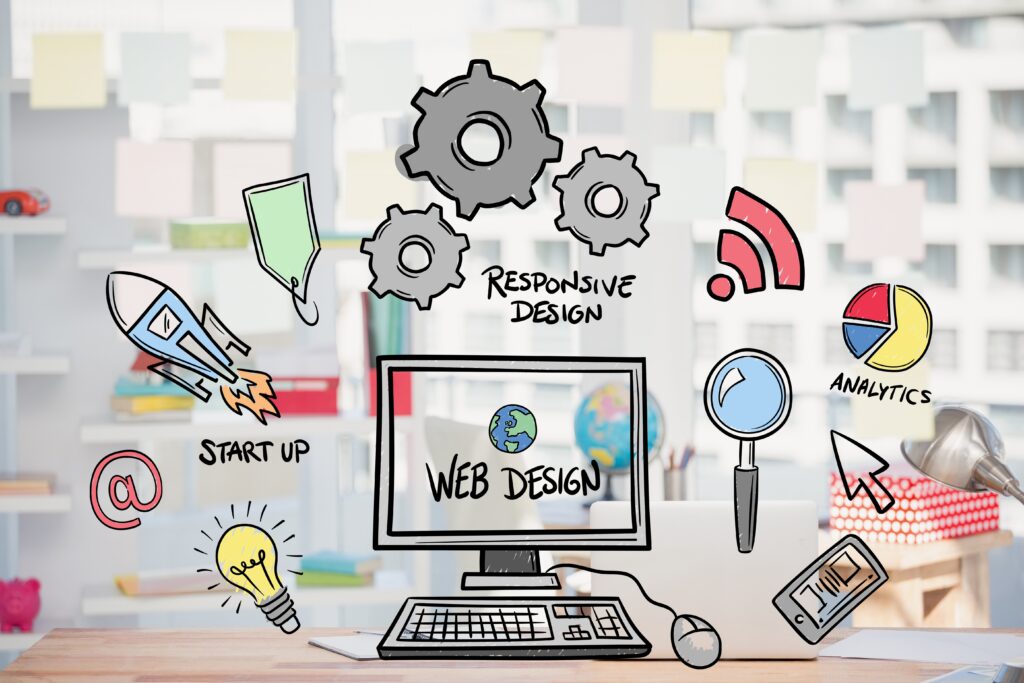
Pay-Per-Click Advertising
In pay-per-click (PPC) advertising, marketers can directly target audiences on news sites and all types of websites and digital platforms through paid advertising. Set up PPC campaigns on Google, Bing, LinkedIn, X (formerly Twitter), Pinterest, and Facebook to show ads to the people searching on terms related to your product or service.
Campaigns can segment according to characteristics such as age or gender, particular interest, or geographic location. Google Ads and Facebook Ads are the most popular and most used among PPC services.
Content Marketing
The aim of content marketing is to reach those customers through the medium of their choice, be it written, visual, or video content. This content would usually be published via a glossy website and promoted via social media, e-mail marketing, search engine optimization, or even pay-per-click campaigns. Content marketing would try to be less conspicuous than advertising, wherein the advertised product or service may get highlighted or may not be so conspicuous.

Email Marketing
Even now email marketing is regarded as one of the best channels for digital marketers, although most people associate it with spam and treat such messages accordingly. Most digital marketers use all their other digital marketing channels to collect names for their email lists. They will try to convert such leads into customers through email marketing.

Social Media Marketing
Primarily, the objectives of the campaign are creating brand awareness and trust. To thoroughly empower one to use social media for lead acquisition and straight marketing and selling, one would usually reach this extreme point through social media marketing. Examples of social media marketing include promoted posts and tweets, among others.
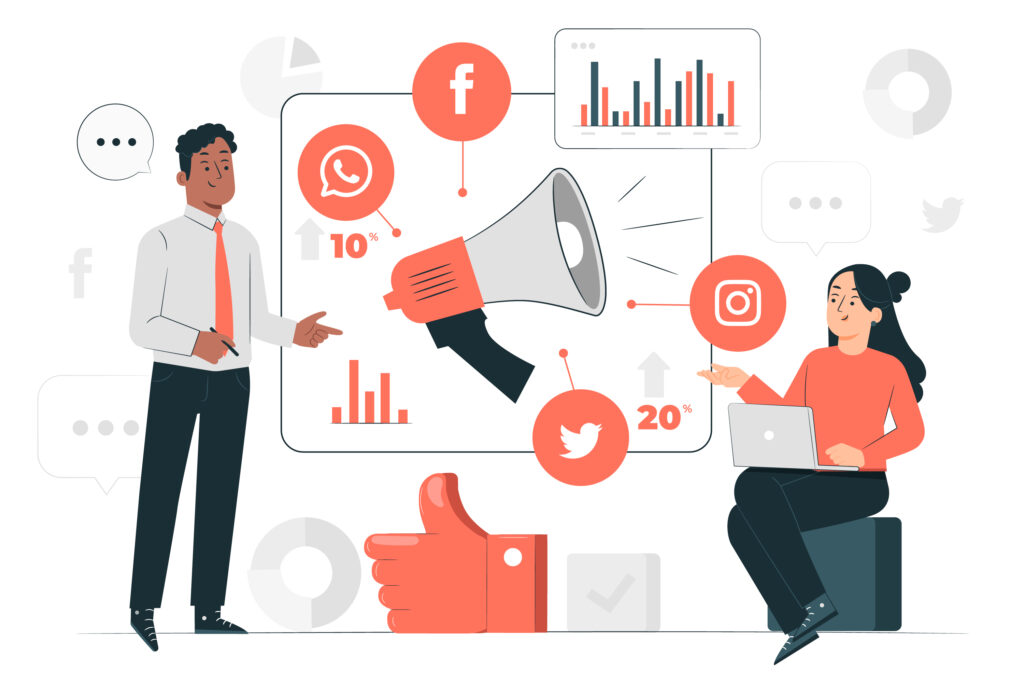
Affiliate Marketing
Affiliate marketing is truly one of the oldest marketing mechanisms, but with the advent of the digital world, it started getting some life. Companies and individual “influencers” significantly promote another company’s product and get a commission for every sale made or a fresh lead added to their list. Many top companies, including Amazon, have pool affiliate programs that pay millions to affiliates who help sell its products.
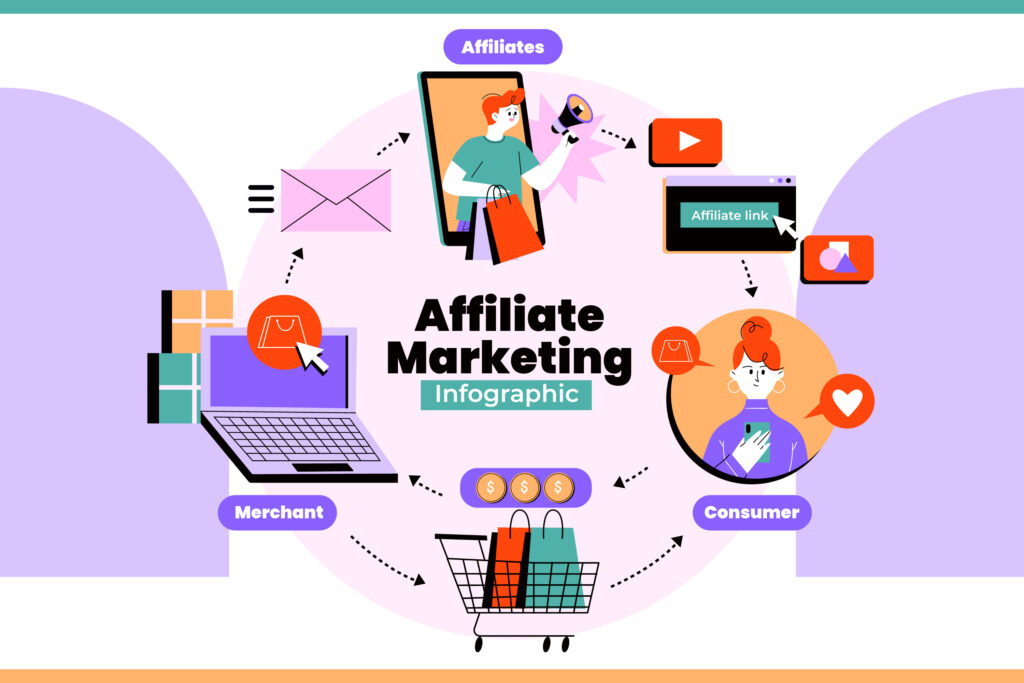
Video Marketing
And a lot of internet users come to these sites, such as YouTube, before making a purchase decision, finding ways to do something, reading a review, or simply relaxing. There are several places marketers can use to run their video marketing campaigns such as Facebook Videos, Instagram, and even TikTok. Integration of video with SEO and content marketing, developing wider social media marketing campaigns is what really works for companies to actualize their video marketing.
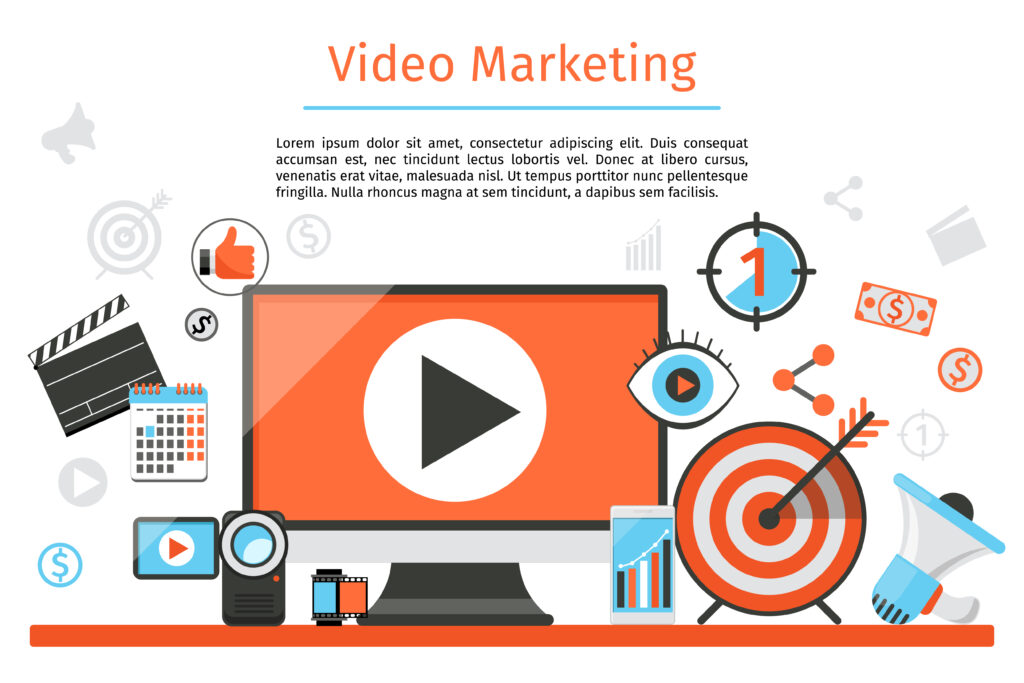
Text Messaging
Newly launched products and marketing campaigns are announced through the use of short messages (SMS). Texting for an organization is not only used for creating a buzz about the cause it works on; even fundraisers can use it as part of their campaign. Nowadays, most marketing campaigns are driven toward the facilitation of providing payment / donation to consumers by simply sending an SMS.

Inbound marketing versus digital marketing
Digital marketing and inbound marketing are practically the same, and one cannot blame them because they are almost twins. Among the most popular tools used under digital marketing are those used in inbound marketing: email and online content, for example. Both prepare customers with search engine research before transforming them into one of their customers. However, the distinction between both lies in how they view the relationship between the instrument and the goal.
On the other hand, aspects of digital marketing relate to how each of these tools or digital channels can convert prospects. A digital marketing strategy of a brand could bring all those elements together or use just one. For example, there may be many contents directed towards social media and deliver few on email marketing but neglect all the other digital marketing avenues.
The second thing worth noting about inbound marketing is the complete approach that inbound gives. Goals first, then tools, and finally specific points at which those tools will be used along the sales funnel to achieve that goal. For example, say you want to increase your site’s traffic to garner more prospects and leads. You would invest in search engine optimization at the time of developing your content marketing strategy, so it would ultimately lead to packages of more optimized content-like blogs, landing pages, and what have you.
Both digital marketing and inbound marketing mean one and the same thing for a marketing professional: did not have one or the other. The fact is, it is the best of both worlds. It would bring structure and purpose to one’s otherwise effective digital marketing. The digital marketing strategies defend their goals by ensuring that they use a particular digital marketing channel toward an end.
Why is digital marketing important?
Every kind of marketing would help your business to flourish. But digital marketing is mainly imperative due to its quickly accessible digital channels. In fact, since July 2024, there were 5.45 billion internet users across the globe.
Digital marketing can be effective on the audience using an array of inexpensive communication methods to reach them-from social media to text messages. Digital marketing also involves very few upfront costs, making it the best of all small business marketing strategies.
B2B versus B2C digital marketing
Digital marketing tactics apply both to B2B and B2C firms, but their best practices vary significantly. Let us, therefore, glance at digital marketing and examine its applicability in B2B and B2C arenas:
- B2B sales funnels are where clients take more than one or two months to conclude a deal. For these individuals, relationship-building works better; on the other hand, B2C consumers respond to short-term offers and messages.
- Transactions between B2B inhabitants typically rely on logical ability and evidence; such is what trained and adept digital marketers do. B2C customers commonly have a renowned link with the product and are inclined to feel great and positive with his buying experience.
- Most decisions in B2B do require the consensus of more than one person. Marketing materials that usually work best on this kind of decision-making are shareable and downloadable. B2C customers, in contrast, like personal relationships with brands.
There are exceptions to every rule, and a B2C company whose high-end product is either a car or a computer might offer more informative and serious content. Therefore, your digital marketing strategies always have to be aligned with your customer base in both B2B and B2C contexts.
Analyze the target market for well-informed and targeted online marketing campaigns. This ensures effectiveness in marketing efforts and their attention towards potential customers.
Types of digital marketing
Digital marketing is vast in specializations as it is in ways of interacting through digital media. Discussed henceforth are certain key types of digital marketing tactics.
Search engine optimization
SEO (Search Engine Optimization) is more of a technique than an actual form of marketing. Some people refer to it as an “art and science.”
Science is the most important side of SEO. It is scientific in that it requires research and weighing different factors that contribute to landing that all-important number one search engine results page (SERP) position.
As of today, the most important aspects of SEO for web page optimization include:
- Quality and uniqueness of content
- Optimization of key elements for the targeted keyword (URL, title tag, H1, sub headlines)
- Level of user engagement (time on page, bounce rate)
- Number and quality of backlinks
- Internal linking
SEO optimization is the technical discipline that is concerned with these behind-the-scenes elements of your site. These will include the mobile-friendliness of your site and loading times. When you improve technical SEO, you make it available for search engines to navigate and crawl around your site better.
Applying these factors strategically is what makes SEO a science, but, because of all the variables that come into play, it becomes an “art” that in most cases requires the input of SEO professionals with experience.
In the end, whether it be for your brand or otherwise when a person searches for a query or terminologies in relation to your brand, Google’s best result pages will rank at the top position or as close as possible. However, it must not be forgotten that there are many search engines; what mostly preoccupies the attention of today’s digital marketers is Google as it accounts for nearly the entire share of the global search engine market.
Such companies modify their algorithms constantly, so search engine optimization (SEO) never proves to be a one-time operation. Most probably, your competitors will adopt SEO strategies, too. What it would be better to do is keep a close eye on the performance of your page, analyzing regularly, and making necessary modifications.
Content marketing
Content quality is an important element of an optimized page. Hence, SEO becomes the primary factor in content marketing, which refers to delivering relevant and extremely valuable content for a customer audience.
Like any marketing strategy, content marketing seeks to gain leads and convert them to customers. But the manner of doing this differs from mainstream advertising. Whereas advertising tries to lure customers with value from a product or service, content marketing offers value free of charge through articles, blog posts, and other written forms.
- Blog posts
- E-books
- Newsletters
- Video or audio transcripts
- Whitepapers
- Infographics
Content marketing is invaluable, and the numbers only prove it:
- 84% of consumers anticipate that companies will produce entertaining and helping content experiences.
- 62% of companies with at least 5,000 employees create daily content.
- 92% of marketers confidently declare that their companies place high value on the content assets.
Content marketing is very effective, yet quite difficult to actually undertake. And effective content marketing writers must be able to rank well on search engines while captivating the audiences who will read, share, and further interact with the brand. Indeed, on all counts, it is about building strong relationships further down the pipeline with relevant content.
Well, you need to target your audience if you want to write that highly relevant, engaging material. Who are you ultimately going to reach with your content marketing efforts? From there, you will know what type of content you would create. Typography is not the only facet of content; it also includes audio-visual presentations such as videos, blog posts, and printable worksheets.
But any kind of content you do, follow the content marketing best practices, such as writing grammatically correct and error-free but also simple yet relevant and interesting content. Content should carry potential readers to the next step in the pipeline, whether that is a free consultation with a sales representative or a signup page.
Social media marketing
Social media marketing means creating traffic and awareness of a brand by getting people to talk about it online. With social media marketing, you can get your brand, products, services, culture, and more out there. Given that billions spend their time engaging on social media platforms, applying social media marketing could eventually pay off.
Facebook, X, and Instagram are the most popular digital platforms for social media marketing, while LinkedIn and YouTube are right next to them. Eventually, which social media platforms you use for your business depends on what you want to achieve and who your target audience is. For example, if you want to attract new leads to your FinTech startup, target that audience on LinkedIn, where industry professionals are active. On the other hand, if you run a B2C aimed more at younger consumers, then it might be a much better option to advertise on social media via Instagram for your brand.
On the very basis of the definition, social media marketing is an efficient way to capture the audience by making them active participants in the conversation. And engagement analytics usually come under the first section of social media marketing, which is highly beneficial for knowing the effectiveness of your message with your audience. You have the freedom to decide which types of interactions mean the most to you, be it number of shares, comments, or total clicks to your website.
Direct purchase may not be the purpose of your social media marketing strategy. Rather many brands use social media marketing as a dialogue form with audiences than just creating an urge to spend money instantaneously. Most of the types fall under the category of brands whose goal audiences are more likely to be older age groups or those who offer products and services that do not readily lend themselves to impulsive buys. All depends on the marketing goals of the organization.
To create a good social media marketing strategy, best practices guide the way. Below are some essential social media marketing best practices:
- Develop interesting and valuable content.
- Answering questions and comments in a professional manner.
- Set up a schedule for posting on social media.
- Make sure to post at optimal times.
- Hire social media managers for your marketing.
- Know your audience and which social platforms they are active on.
Learn about what Mailchimp can do for your social media by comparing the free social media management tools with others.
Pay-per-click marketing
Pay-per-click or PPC is a medium of digital marketing with which you pay a certain fee on every click for publicizing your digital ads. Instead of paying a fixed amount to show particular advertisements continuously on online marketing channels, he/she just pays for the ads individuals interacted with. The timing and visibility of ad display are much more complicated.
Search engine advertising is probably the most popular type of PPC, whereby a lot of people will use Google Ads because it is commonly the search engine used. When there is an open space in an engine’s search results page (an area usually referred to as SERP), that empty space is filled instantly by auctioning off the spot. An algorithm ranks every available ad according to numerous criteria,including:
- Ad quality
- Keyword relevance
- Landing page quality
- Bid amount
Based on these determinants, the PPC ads are displayed at the very top of the search engine result pages whenever a user enters a search query that triggers the advertisement.
Each PPC ad campaign has its own conversions, defined as actions viewers are meant to take after clicking on an advertisement. Conversions can be transactional or non-transactional. A purchase is a conversion, as is signing up for a newsletter or calling your headquarters.
Whatever conversion actions you nominate, you will be able to track them across the chosen digital marketing platforms in order to evaluate how your campaign is performing.
Affiliate marketing
Affiliate marketing is a digital form of marketing by which one person can earn money by marketing someone else’s business. You may as well be the promoter or the business associating with the promoter, but in either case, it is the same.
It works on a revenue share system. For instance, if you are the affiliate, you earn a commission each time a person buys that product you promote. If you are the merchant, you will pay affiliates according to sales that he or she got from you.
Some affiliate marketers will only review products from a single company, perhaps on a blog or other third-party site. Others may connect with multiple merchants.
It is very simple to be an affiliate or find one by creating a direct link with the other. You can do this through digital channels intended to connect affiliates with retailers; alternatively, you can start by joining a program that is for a single retailer only.
As a retailer willing to work with affiliates directly, there are many things you could do to create an attraction for prospective promoters. It will be important to provide those affiliates with the necessary tools that can help them to succeed-it includes incentives tied to outstanding performance as well as their marketing and pre-made materials.
Native advertising
Beneath the cover of its digital marketing, Native Advertising serves itself. Its avowed purpose is to invest itself deeply into the surrounding tissue, thereby making it less overtly an advertisement.
Native advertising was born as a cure for the skepticism about ads that exists among consumers. Since they are aware of the fact that every advertisement is paid for by the advertiser, they tend to consider it biased and ignore it.
A typical native ad provides information or entertainment first, before anything else promotional, thus downplaying the appearance of “ad.”
It’s good practice to label your native advertisements as such at all times. Use words such as “promoted” or “sponsored.” Without those cues, people may sometimes spend much time consuming the item before they realize admit it is advertising.
If consumers know what they are getting, they feel much better about the content and the brand. Native adverts are designed less for that intrusive encounter an ad but not to be misrepresentation.
Influencer marketing
Influencer marketing does share similarities with affiliate marketing in that it involves collaborating with influencers–celebrities, industry experts, or content creators having a substantial following–for promotional exposure. In many instances, an influencer is strategically placed to promote a brand’s product or services to their social media followers.
Influencer marketing can be an effective marketing strategy for B2B and B2C businesses that wish to familiarize their products with new audiences. Choosing the right influencers is critical, as they represent your brand and product. An unfit influencer can destroy the trust consumers have for your business.
Marketing automation
Marketing automation involves the use of software to streamline the functioning of digital marketing campaigns so that advertising can become more efficient and relevant. Hence, you can focus on digital marketing strategy-making instead of those laborious and time-consuming processes.
Whereas marketing automation might seem like something of a luxury and otherwise dispensable, it definitely affords a tangible measure to improve engagement between you and your audience.
Statistics tell us:
- 90% of consumers view personalization as “very” or “somewhat” appealing
- 81% of consumers would like brands that they interact with to know them better.
Marketing automation allows organizations to meet the expectations of personalization. It lets brands:
- Collect and examine consumer information
- Construct targeted marketing campaigns
- Send and post digital marketing messages to the right audiences at the right times.
Most marketing automation software uses prospect engagement (or lack of it) with a particular message to determine when and how to communicate next. This level of real-time customization allows you to build an individualized marketing strategy for every customer without spending any extra time doing so.
With its marketing automation tools, Mailchimp allows interactions with an audience using behavior-based automations, transactional emails, date-based automations, and more.
Email marketing
The simplicity that can easily define it is that email marketing involves sending promotional messages to a prospect and hoping he or she will click on them. The execution, however, is much more complicated. First of all, you have to make sure that your emails are wanted and thus an email marketing provider with the following features is crucial:
- personalizes all content, both in the body and the subject line
- email signature offers a clear unsubscribe option
- includes both transactional and promotional email types.
You should be sure that your prospects view your campaign as a service offering valuable information to them rather than simply as a promotional tool.
Email marketing works as a standalone and, when paired with other digital marketing forms such as marketing automation, can make sending, segmenting, and scheduling emails even better to address your customers’ needs.
Should you be considering email marketing, you might want to consider these tips for the best email marketing campaigns:
- Audience segmentation: send relevant campaigns to the right people
- Make sure emails are mobile-friendly
- Develop a campaign schedule
- Run A/B testing
Mobile marketing
Mobile marketing is essentially a digital marketing approach that allows marketing communication with the target audience through their mobile devices, such as smartphones and tablets. This could be via SMS and MMS messages, social media notifications, mobile app notifications, etc.
It is imperative to ensure that all the content is tailored for mobile devices. The Pew Research Center says that nine out of ten Americans have a smartphone, so once you have moved beyond marketing for the computer to mobile screens, you can greatly benefit from this marketing tool.
The benefits of digital marketing
Digital marketing is essentially the place where fame lies. Primarily because a digital message covers that wide range of audience. Though, many other advantages are always open to help with your marketing. The following are benefits derived from digital marketing.
A broad geographic reach
Online ads can be viewed anywhere by anyone (unless, of course, you have limited the ad geographically) and thus make it easier to expand the market reach of your business while connecting with the greater audience across different digital channels.
Cost efficiency
Digital marketing encompasses a far broader audience than traditional marketing does and also has comparatively lower costs. Overhead costs for places like newspapers, TV commercials, and other conventional ways of marketing can be quite high. It also offers the least opportunity for getting control over whether or not the target audiences would see those messages in the first place.
Digital marketing will allow you to create one piece of content that directs visitors to your blog as long as the blog remains live. You can set up an email marketing campaign that delivers messages to targeted customer lists on a schedule, which can easily be altered if need be.
When it comes down to the nitty-gritty, that means you get a lot more flexibility in dealing with customers per dollar spent on advertising through digital marketing.
Quantifiable results
To ascertain whether your marketing strategy shall benefit, you will have to find out how many customers it attracts and how much revenue it ultimately generates. But the question is, how do you achieve that through a non-digital marketing strategy?
The old ways: On each customer’s entry, ask him: “How did you find us?”
Sadly, that will not work for every industry. There are many companies that never get to speak one-on-one with the customers, and surveys hardly get completely answered.
Tracking results is easy with digital marketing. Digital marketing software and platforms can automatically monitor the number of conversions you wish to measure-whether that means open rates for your email, visits to your homepage, or direct purchases.
Easier personalization
The great thing about digital marketing is that it allows for market data that may not always be available for offline marketing. Digitally collected data tends to be more precise and specific.
If you provide financial services and have special offers to Internet users who have considered your products, targeting means you will realize better conversion for offers customized to the person’s interest. This is why you decide to run 2 campaigns: one for young families looking into your life insurances and the other for millennials and entrepreneurs looking into your retirement plans.
Without resorting to any automated means of tracking, how would you collect all that data? How many phone logs would you need to sift through? How many customer profiles? And how would you know who among them had either read the brochure or not?
More connection with customers
The cool thing about digital marketing is that you can now talk to your customers as and when it happens. Even more exciting is that they can speak to you as well.
Think through a social media strategy. The ideal case would probably be when your target audience sees your latest post, but it’s even better if they comment on it or share it. This not only increases buzz around your product or service, but also visibility every time someone joins the conversation.
Interactivity without follow benefits the customer as well. It makes him a more involved participant in the brand story, which will give him that ownership experience that translates to solid brand loyalty.
Easy and convenient conversions
Digital marketing puts your customers in a position to take action almost immediately after seeing your ad or content. With traditional advertising, for example, the most immediate result is a phone call from a prospective customer shortly after seeing an ad. But, how often is someone doing the dishes or driving down the highway or updating records at work able to contact a company?
In other words, they can click on the link or save the blog and advance right there in the sales funnel. They may not make an immediate purchase, but now that they have your link, you could stay in touch and interact with them more.
How to create a digital marketing strategy
Many small businesses just starting out in digital marketing find it tough to take the initial steps in it. However, by following these key steps, you can develop a strong digital marketing strategy to aid brand awareness, engagement, and sales.

Set SMART goals
“Getting well-defined and specific, measurable, achievable, relevant, and time-bound (SMART) goals is important for any kind of marketing strategy that one would use. Try to limit them towards the few ones that really push your strategy forward instead of having it stuck at the goal level.”
Identify your audience
Before any marketing campaign can be launched, the audience has to be defined or identified. It is from this audience that the campaign will be directed at, and obviously, they will have attributes in common: age, gender, demographic region as well as purchasing behavior. Knowing your target audience perfectly well helps you choose what digital channel would be most appropriate for them along with which message in your campaigns.
Create a budget
With a budget in place, you can channel your resources in the right direction to achieve your goals without wasting money on inefficient digital marketing channels. Take into account your SMART objectives and the online channel you plan to use when drawing up your budget.
Select your digital marketing channels
Interpreting your campaign data after the campaigns have ended to understand what has been done well and areas for improvement will enable you to enhance future campaigns. Digital software and technology will help you obtain this data in an easy-to-read dashboard. Mailchimp’s digital-marketing-analytics reports will help you monitor your marketing campaigns at one place.
Refine your marketing efforts
You can leverage a wide array of digital marketing channels-from content marketing to PPC campaigns and anything in between. The selection of digital marketing channels will therefore depend on your individual goals, audience, and budget.
Digital marketing creates growth
Digital marketing ought to occupy the top slot on the priority list for any business marketing strategy. No other marketing channel allows constant engaging with customers and potential hyper-targeting with data-driven personalization. Therefore, the more you practice digital marketing, the more opportunity it is creating for the growth and profit of your business.
Digi Dervish, being the expert in SEO, social media marketing, PPC marketing, content marketing, and email marketing, propagates building solid online platforms for businesses. Our result-driven techniques help you reach the right audience for enhanced customer experience and conversion.
Come and let Digi Dervish take your business to its extreme—reach us today for your next step in digital marketing!
We have many articles surrounding the digital marketing landscape in our marketing library.g.


